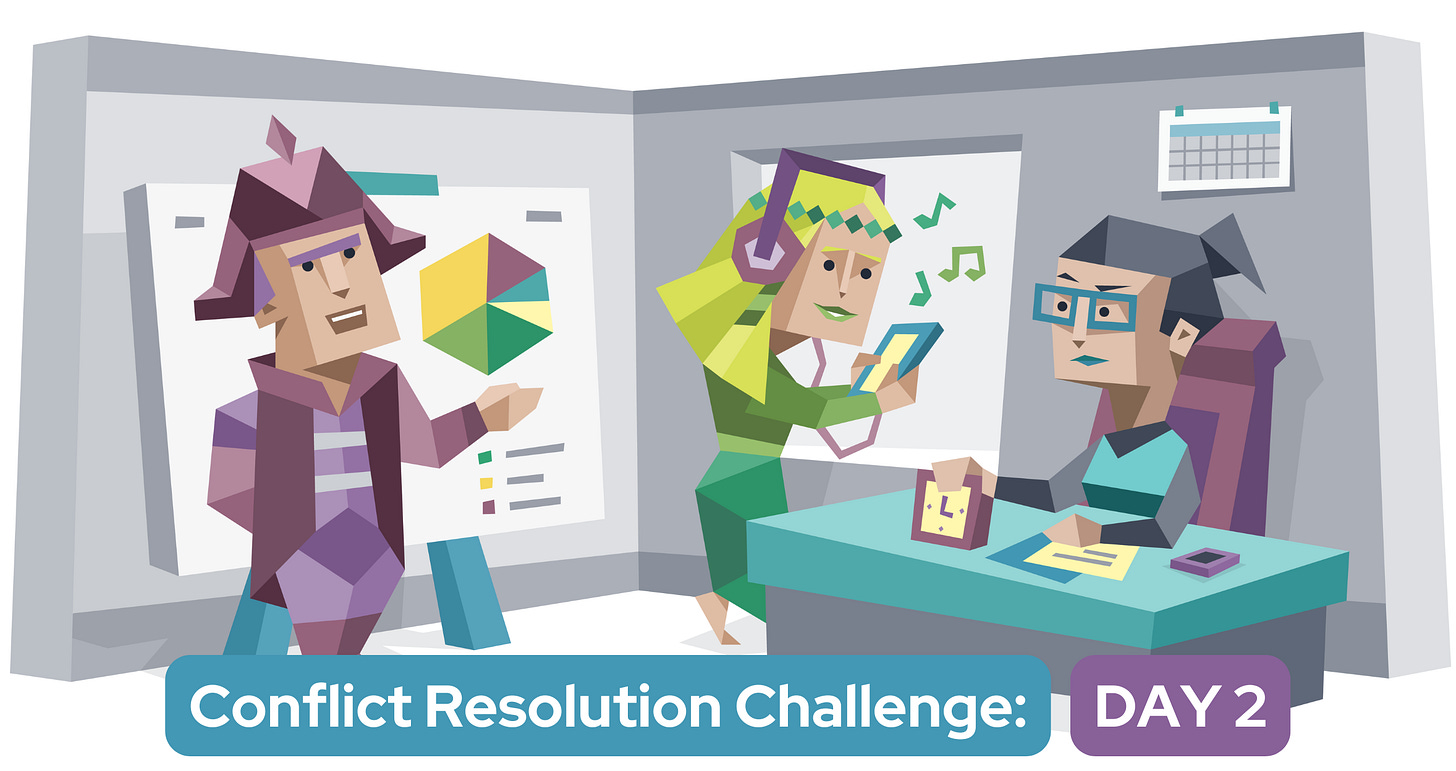How to Address Work Conflict Before It Escalates
Master Intervention Strategies for the Three Main Conflict Triggers: Part 2 of 5 in Our Conflict Resolution Challenge
TL;DR
Different conflict triggers require different intervention approaches – one size doesn’t fit all
Trust/communication issues need curiosity and psychological safety rebuilding
Structural/clarity problems require process conversations and systems thinking
Personality/stress conflicts need acknowledgment of differences and stress management
The wrong intervention approach can escalate rather than resolve brewing tension
Welcome to Day 2
If you did yesterday’s conflict scan, you probably identified at least one yellow flag that made you think, “Yeah, I should probably address that... but what if I make it worse?”
Some leaders avoid early intervention not because they don’t care, of course, but because they’re terrified of turning a small problem into a big one. Today we’re building your confidence with targeted intervention techniques for each type of brewing conflict.
As a reminder, here’s what to expect throughout this 5-day Conflict Resolution Challenge:
Day 2: Addressing Conflict Before It Escalates (You Are Here)
Day 3: Giving Negative Feedback Without Creating Conflict
Day 4: Navigating Heated Moments
Day 5: Repairing & Rebuilding After Conflict
The One-Size-Fits-All Trap
Most leadership advice gives you generic conflict resolution techniques – “have an open conversation,” “listen actively,” “find common ground.”
These work sometimes, but they can backfire when you apply the wrong solution to the wrong problem. Remember yesterday’s three conflict trigger categories? Each needs a fundamentally different intervention approach:
Trust/communication issues are a sign you need to fix a relationship
Structural/clarity problems are a sign you need to fix the process
Personality/stress conflicts are a sign you need to help people understand each other
Using the wrong approach will often make things worse by signaling to your team that you don’t understand what’s really happening.
Let’s take a closer look at each approach, shall we?
Strategy 1: Rebuilding Trust and Communication
When to use: You’ve spotted information hoarding, defensive communication, blame language, or people avoiding direct conversations.
Your approach: Create psychological safety through curiosity and exploration. Your goal is genuine understanding, not immediate problem-solving. Approach with curiosity about people’s experiences rather than conclusions about what’s wrong.
Conversation starters that might work:
Keep reading with a 7-day free trial
Subscribe to Leadership by 16Personalities to keep reading this post and get 7 days of free access to the full post archives.



